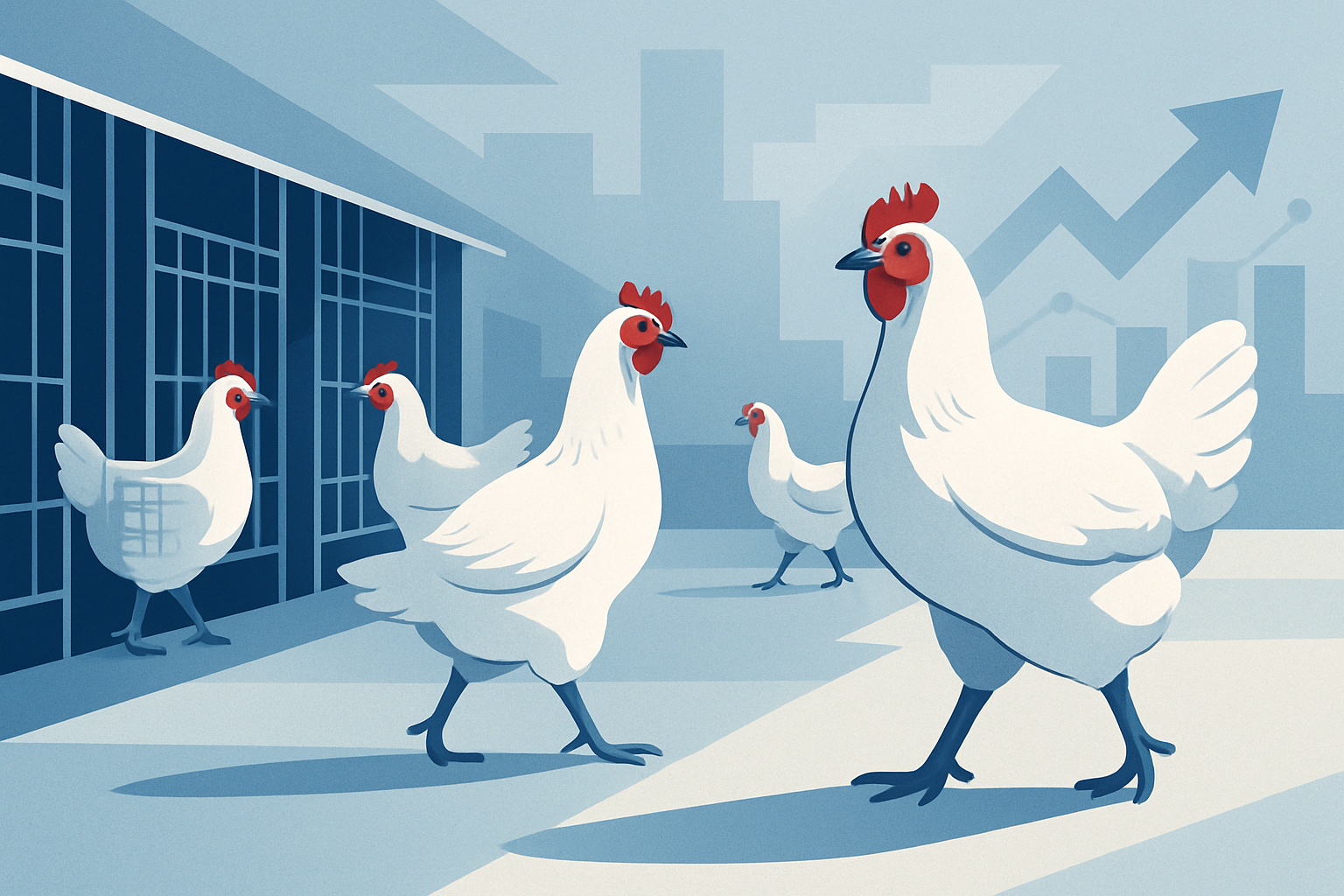




More hens than ever are free from cages—45.7% of the US flock, a historic high. Here’s what this means for animals, corporations, and the fight to end extreme confinement.

This is a watershed moment for hens.
A few times a year, I read the US Department of Agriculture’s Egg Markets Overview with the same anticipation most people reserve for their favorite TV show. This June, the latest report delivered a number I never expected to see so soon—45.7% of all US egg-laying hens are now living outside “battery” cages (which are named for the way they resemble the long rows and tight columns of an artillery battery). That’s the highest percentage in US history, and it’s more than just a statistic. It’s a testament to what happens when thousands of people, like you, demand better for animals—and refuse to let companies off the hook for empty promises.
What the data tells us—and what it doesn’t
Let’s dig into the numbers. As of June 2025, nearly half of the US flock—roughly 130.6 million hens—live cage-free, up from 38.5% at the same time last year. The number of hens trapped in cages has dropped to 154.9 million, the lowest ever recorded. Just this year alone, 10 million more hens were freed from cages, while 30 million fewer are suffering in them.
Some might chalk up these shifts to the recent outbreaks of avian flu, but the story isn’t so simple. Since early 2024, both caged and cage-free flocks have been hit by disease at similar rates. In fact, the most significant outbreak in recent months actually affected a large cage-free facility. The real driver behind these numbers isn’t just disease—it’s a groundswell of public demand and relentless pressure on companies to keep their word.
Accountability: Turning promises into real change
Here’s why this moment matters: getting companies to promise to spare hens from cages is only half the battle. Following up—making sure they actually deliver—is where the real impact happens. And that’s where your advocacy comes in.
Over the past decade, supporters have sent thousands of messages, signed petitions, and shown up at protests demanding that companies keep their promises to animals. You’ve called out corporate giants when they tried to quietly backtrack or delay. You’ve celebrated those who followed through. This kind of accountability isn’t glamorous, but it’s the engine that powers lasting change for animals.
The latest numbers confirm that it’s working. Companies aren’t just talking about change—they’re being forced to make it. The industry is adapting, not out of the goodness of its heart, but because they know you’re watching.
Visualizing progress
The progress is stark when you see it on a chart. Since 2007, the number of caged hens in the US has steadily dropped, while the cage-free flock has soared.

Every time that line ticks upward, it’s a signal: more hens can finally walk, flap their wings, and express basic natural behaviors that cages deny them. Each percentage point is millions of animals spared from a life of relentless confinement.
Why this matters for animals—and what comes next
It’s easy to get lost in the numbers. But behind every data point is a real, living being whose life is profoundly changed. When a company keeps its promise, it means millions of hens can finally spread their wings or lay their eggs in a nest.
Of course, 45.7% isn’t 100%. There are still more than 150 million hens trapped in cages across the US. The fight isn’t over, and the industry will look for new ways to cut corners. But the days of unchecked cruelty are numbered. The more we hold companies accountable, the faster cages will disappear for good.
Every petition signed, every call made, every dollar donated—it all adds up to moments like this. If you want to see the cage-free line climb even higher, stay loud. Share this progress with friends and family. Hold companies to their word. And keep showing up for animals—because your voice is the reason this movement works.
 Michael Windsor
Michael Windsor





